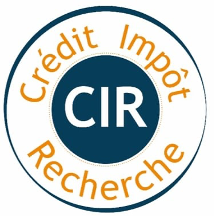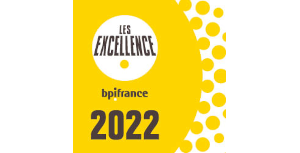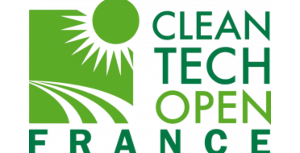The Research Tax Credit (CIR) is a tax aid to support companies in their innovation efforts by deducting from their taxes a portion of the expenses for research work carried out within the company.
Evaluation Criteria
The assessment of the eligibility for the CIR of the work carried out by a company is based on a file prepared for the fiscal year and presenting the research work carried out by the company during that year. In order for the CIR to be assessed effectively by a scientific expert appointed by the Ministry of Higher Education, Research and Innovation, the file prepared for the CIR preferably includes, for each research project, the following points:
- presentation of the state of the workpiece existing at the beginning of the work;
- details of the scientific and technical uncertainties, technological obstacles and problems to be solved with regard to the existing state of the workpiece.
- presentation of the eligible work carried out;
- highlighting the scientific or technological progress achieved by showing how the work undertaken results in a significant deviation from the existing state of the workpiece.
The file will be assessed by a scientific expert, generally a researcher. They will assess whether the work carried out is of the research type (eligible) or of the development type (not eligible for the CIR). It should be stressed that research work generally improves scientific knowledge in the field, whereas development work is merely an application of established scientific knowledge.
This assessment of the research aspect is similar to the patentability analysis of an invention, and in particular to the assessment of the inventive step. Indeed, the inventive step of an invention is generally assessed in the light of a state of the workpiece existing at the time of filing of the patent application by assessing the difficulties for a person skilled in the art to achieve the invention which is the subject of the patent application on the basis of this state of the workpiece.
The filing of a patent application is moreover generally considered as a positive marker in the evaluation of the eligibility of the work carried out.
Eligible expenditure
- The expenses eligible for the EIF are of several types and include in particular
- depreciation of buildings used for research operations and movable property acquired as new or created ;
- expenditure on staff involved in the eligible work, principally the salaries of researchers (engineers, doctors, doctoral students) and research technicians in proportion to the time spent on the eligible work. Compulsory social security contributions relating to social insurance, unemployment insurance, supplementary pension and provident schemes are also taken into account in the calculation. A portion of the salary of company managers may also be taken into account insofar as they effectively and personally participate in research operations. Additional remuneration for inventions is also included in the eligible expenditure.;
- operating expenditure such as support staff, administrative expenditure or raw materials
- expenditure relating to outsourced R&D operations, entrusted to service providers eligible for the CIR, under certain conditions
- expenditure on the protection of intellectual property protecting inventions (whether or not they have been the subject of R&D work within the enterprise), namely patents, utility certificates, certificates of addition attached to a patent and plant variety certificates (VOCs).
These expenses take into account in particular the fees paid to the offices as well as the fees paid to industrial property attorneys and representatives during proceedings (filing, maintenance, examination, etc.) before the French (INPI) or foreign offices. - Expenses related to the filing of trademarks and designs are not taken into account in the CIR base.
- As for expenses related to the defense of patents in the context of infringement actions before a court, these are eligible for the CIR, including legal fees, attorneys' fees and personnel expenses incurred by the company for the defense of patents.
- Insurance costs for the legal protection of patents and VOCs held by the company are also eligible for the IRC up to a maximum of € 60,000 per year;
- expenditure on technology watch, namely :
- o Expenditure on technology watch carried out at the same time as the R&D operation and up to a limit of €60,000 per year ;
- o expenditure on subscriptions to scientific journals or databases;
- o expenditure on the purchase of technological studies;
- o expenditure on participation (registration) in scientific congresses or expenditure generated solely by participation in such congresses; o expenditure on subscriptions to scientific journals or databases; o expenditure on the purchase of technological studies; o expenditure on participation (registration) in scientific congresses or expenditure generated solely by participation in such congresses.
- o excluding staff costs corresponding to time spent consulting the Internet.
The rate of the CIR granted to the company is 30 % of eligible expenditure for a first tranche up to EUR 100 million and 5 % thereafter.
In summary, the CIR is a tax tool contributing to the financing of business innovation and the protection of these innovations by covering part of the expenses incurred by the company.
To this end, the company is required to prepare a file justifying the CIR per fiscal year, which can be requested at any time by the tax authorities.
Do not hesitate to contact us for any further information on this subject..
Adrien BETRANCOURT
Ingénieur BREVET
New Trademark Law in Canada
Finally announced many years ago, Canada has finally joined the Madrid System!
This country thus becomes the 120th country likely to be designated by means of an international trademark from 17 June 2019.
Why should we welcome such an accession?
The main advantages of the international trademark are the following:
.a single trademark application designating one or more member countries,
.a single interlocutor: WIPO (WIPO in English),
...one brand number,
.a single language of proceedings (choice of French language for example),
.a single application to designate several classes (multi-class filing),
.a single registration certificate,
.a single renewal application,
.a single request for registration in the event of a change of name, address or owner.
As a reminder, the initiation of an international trademark procedure is, however, conditional on the existence of a basic trademark (filed or registered) in a member state or organization of the Madrid System.
Each designated territory has a maximum period of twelve to eighteen months from the date of notification of the international registration to examine the mark under its own legislation.
Therefore, as of June 17, 2010, a trademark owner will be able to register his trademark in Canada by means of an international trademark, thereby reducing the often complex administrative procedures and providing legal protection identical to that of a national trademark application.
Of course, a Canadian national registration will still be allowed.
In this respect, the national registration procedure has been harmonized with that of many other countries.
Among the major changes, we would like to highlight the following in particular:
The term of protection of the trademark will be 10 years instead of 15 years;
Any new trademark application as well as any renewal will have to respect the Nice International Classification by designating classes of goods and/or services by paying the corresponding official fees;
Renewal can only be requested 6 months before the expiration of the term;
The declaration of use will not be requested any more in order to obtain the registration of the mark;
Filing and renewal fees will be established according to the number of classes declared.
Strategically, it could be economically advantageous to file or renew your trademark early, before June 17, 2019, in order to benefit from the current flat-rate renewal costs, in particular when applications cover more than two classes.
We invite you to contact us in order to provide an update on your trademark portfolio as well as on any new application if this territory is of commercial interest for your activity..
As a reminder, trademark rights are territorial so that a single registration in France does not protect you in other countries!
Bérénice AUBERT
CPI – Marques/Dessins et Modèles














